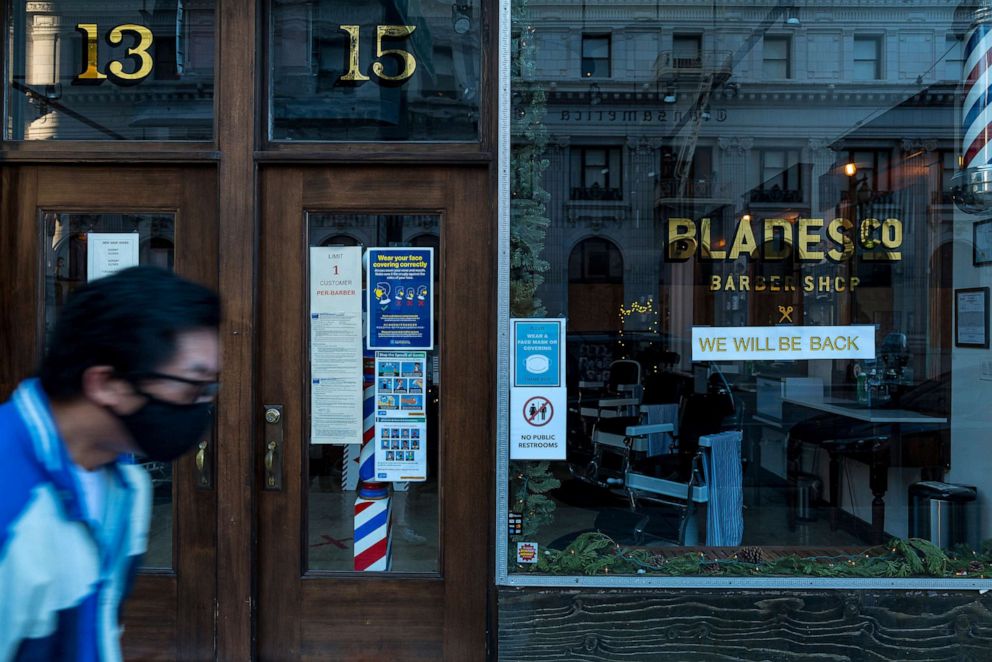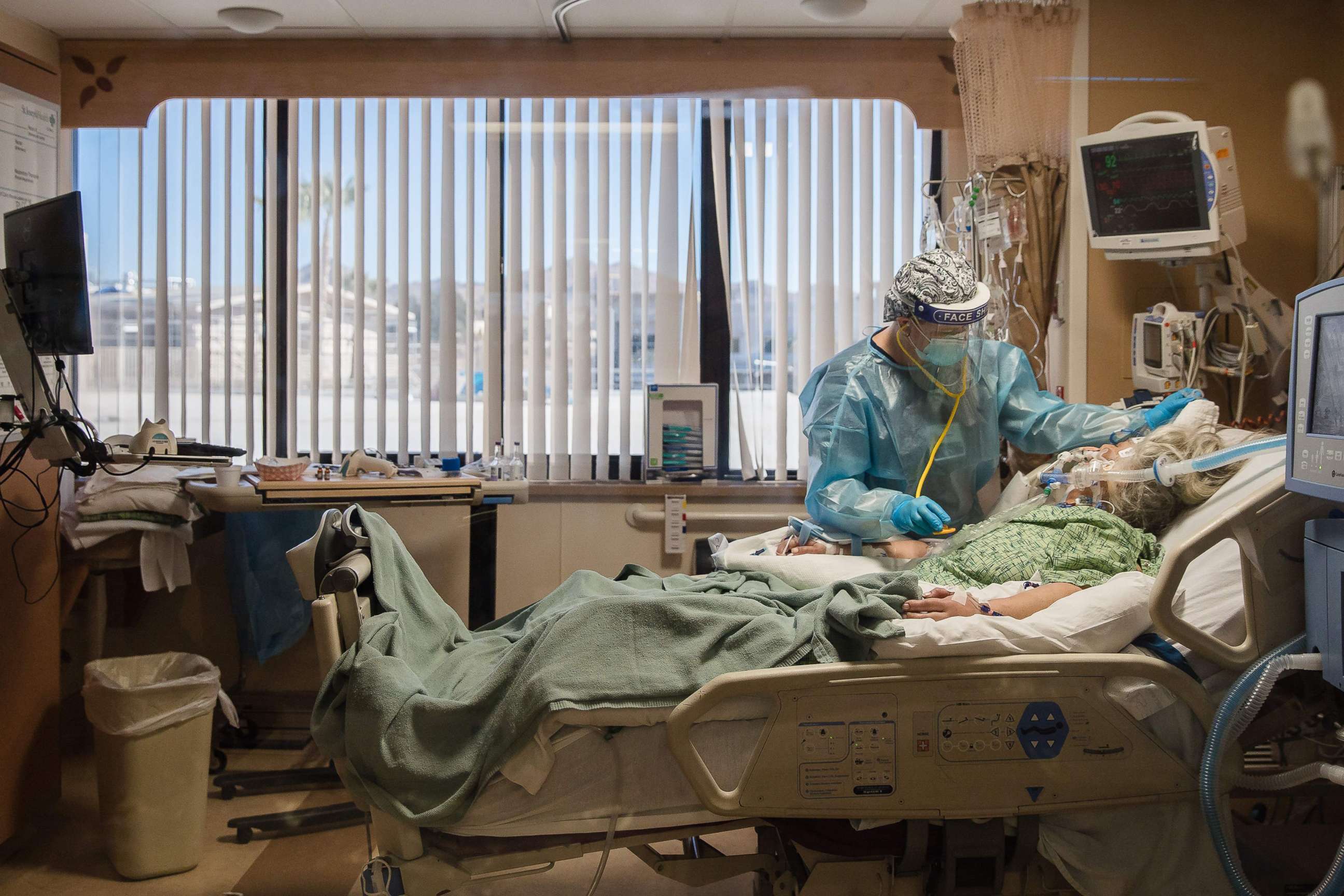California lifts some COVID restrictions as state continues to be hard-hit
Projections for ICU capacity are above the 15% threshold, officials said.
After nearly two months, California health officials announced Monday they ended their latest stay-at-home order, citing increased Intensive Care Unit capacity.
The new guidelines will allow certain businesses to reopen, including outdoor dining and gyms, with strict restrictions on the maximum number of people allowed, according to the California Department of Public Health.
Officials and health experts warned that the state, which still has a 14-day average for hospitalizations over 20,000, is not out of the woods and people need to remain cautious.
"COVID-19 is still here and still deadly, so our work is not over, but it’s important to recognize our collective actions saved lives and we are turning a critical corner," Dr. Tomás Aragón, the director of the California Department of Public Health, said in a statement Monday.

The regional stay-at-home order went into effect on Dec. 5 as the number of coronavirus cases and hospitalizations jumped. It shut down all non-essential businesses for in-person activity and instituted an overnight curfew for non-essential workers.
The state created five regions, Northern California, Bay Area, San Joaquin Valley, Greater Sacramento and Southern California and set a threshold of 15% ICU availability for scaling back the stay-at-home order.
The Northern California region never entered the order due to its lower ICU levels. The Sacramento region exited the order on Jan. 12, the California Department of Public Health said. The remaining three sections have four-week ICU capacity projections above 15%, the health department said.
"Our projections statewide is in the aggregate being at 30.3% on the 21st of February," Gov. Gavin Newsom said at a news conference Monday. "The goal of this announcement is to socialize our projections."
Counties will now revert to the state's color-coded reopening guidelines that were in place before December. All but four counties are at a purple "widespread" tier, the strictest level, which allows for very limited indoor retail, including hair salons, and outdoor dining and gym services.
Los Angeles announced salons and malls were immediately open and it will resume outdoor dining on Friday. San Francisco Mayor London Breed announced she will allow outdoor dining, hair and nail salons, and more starting Thursday.
Newsom warned that the state has a long way to go before returning to normalcy, based on the latest health data.
While the 14-day average for new daily coronavirus cases hit a high of around 40,000 at the end of December, and on Jan. 24, it was near 30,000, according to state health data. At the end of November, the 14-day average of new cases was around 13,000, the health data showed.
The state hospitalization rate on Jan. 24 was 18,347, which is a decrease of 4,318 from the peak level on Jan. 11, according to state health data. However, on Jan. 5, there were 10,624 people hospitalized in the state, the health data showed.
On Jan. 24, there were 4,475 patients in ICUs statewide, compared to 2,393 on Dec. 5, according to the state health data. The 14-day average of ICU COVID-19 patients has increased from 1,896 on Dec. 5 to 4,769 on Jan. 24, the data showed.

The state health department credited several tactics with lowering the hospital numbers, including expanding medical facilities and streamlining the process for transferring patients out of overcrowded hospitals to ones with more space.
"We are seeing a flattening of the curve, but we are not out of the woods yet," Newsom said.
As of Monday, the state has administered over 2.4 million doses of coronavirus vaccines, according to the state health department.
"We have tripled our rate of administration of the vaccine," Newsom said.
In the meantime, the governor and health officials urged Californians to wear masks, avoid crowds, social distance and keep heeding health warnings in the coming weeks.
ABC News' Matthew Fuhrman contributed to this report.
This report was featured in the Tuesday, Jan. 26, 2020, episode of “Start Here,” ABC News’ daily news podcast.
"Start Here" offers a straightforward look at the day's top stories in 20 minutes. Listen for free every weekday on Apple Podcasts, Google Podcasts, Spotify, the ABC News app or wherever you get your podcasts.




